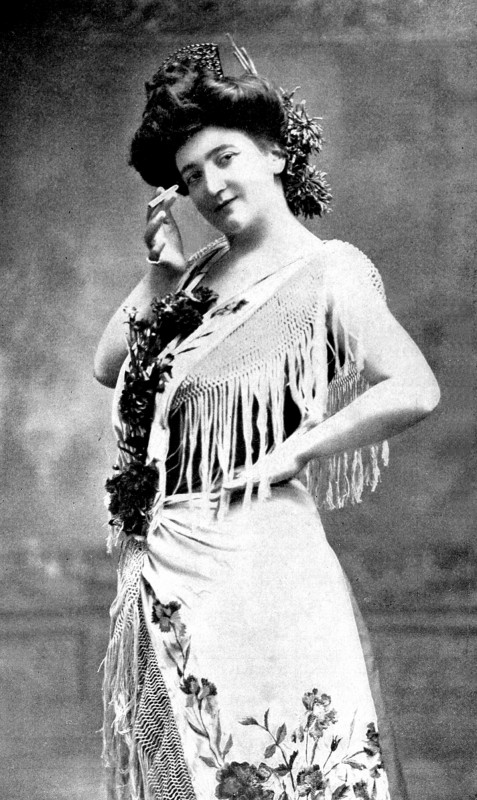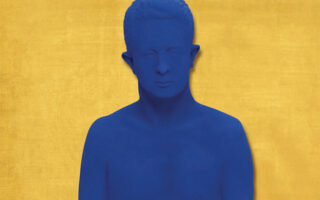Phantoms of the Opera

“The Opera Ghost really existed. He was not, as was long believed, a creature of the imagination of the artists, the superstition of the managers, or a product of the absurd and impressionable brains of the young ladies of the ballet, the mothers, the box-keepers, the cloak-room attendants or the concierge. Yes, he existed in flesh and blood…”
That’s pulp fiction, circa 1911, Gaston Leroux’s Le Fantôme de l’Opéra. But sometimes, buried beneath the surface of even the most blatant potboiler, lies a hidden world of untold riches. And voices.
I know, because I found them, and soon you will be hearing them again-the voices of Enrico Caruso and such legendary divas as Emma Calvé, Nellie Melba and Adelina Patti along with more than a dozen lesser operatic lights of the early 20th century. All buried a century ago and found with a little help from clues buried in The Phantom of the Opera.
In late December last year, the Opéra National de Paris and the Bibliothèque Nationale de France announced the unveiling of a major discovery: a musical time capsule. Not just one Opera Ghost but many, carefully packed away in glass and asbestos inside two large metal urns-24 shellac gramophone discs dating from 1907 and 1912. Entombed, like the lovers in Verdi’s Aida, beneath a great architectural monument, in this case the Paris Opéra Garnier. But unlike Radames and Aida, these ghosts were destined to be freed again, and live on.
In fact the long-forgotten urns had actually been discovered much earlier. I found them myself, some 20 years ago-or, at least, I found the room in which they were buried, in one of the Opera’s sub-sub-basements. I was looking for them, because Gaston Leroux had told me just where to look.
I have prayed over his mortal remains, that God might show him mercy notwithstanding his crimes. Yes, I am sure, quite sure, that I prayed beside his body the other day, when they took it from the spot where they were burying the phonographic records. It was his skeleton. I did not recognize it by the ugliness of the head, for all men are ugly when they have been dead as long as that, but by the plain gold ring which he wore and which Christine Daäe had certainly slipped on his finger, when she came to bury him in accordance with her promise.
First published in 1910, Leroux’s novel is the source for both the classic 1925 silent film starring Lon Chaney and Andrew Lloyd Webber’s 1986 mega-musical; indeed, Phantom has commanded the attention of audiences for nearly a century, and not just in France. Its archetypal story of a mad composer, Erik, and his beautiful protégé, Christine Daäe-itself based in part on George du Maurier’s 1894 novel Trilby-continues to haunt the western imagination. Lon Chaney’s surpassing ugliness, coupled with his erotic desire for Mary Philbin, gave early movie audiences a special frisson that has echoed down the decades via later versions starring Claude Raines (1943), Herbert Lom (1962), Brian De Palma’s Phantom of the Paradise (1974), director Sam Raimi’s Darkman (1990), and Joel Schumacher’s film version of the Lloyd Webber musical (2004).
But whereas Du Maurier’s tale of Svengali and Trilby was a gothic horror, Leroux’s humanized his villain, turning Phantom into something more akin to Beauty and the Beast than Dracula. In whatever guise, we feel sympathy for Erik, and when his skeleton is found at the end of the book, wearing the ring that Christine gave him, we weep for him. It’s a great story.
But what if it’s also true?
We’ve long known that at least parts of the story were based on real events. One of the most memorable episodes in both book and film comes when the enraged Phantom sends the Opera’s great chandelier crashing into the audience. And, in fact, the chandelier once did fall, killing an unfortunate patron. Leroux was, after all, a well-known journalist and he kept his reporter’s eye for detail even when he was writing fiction. And in Charles Garnier’s magnificent Opera House he found the perfect setting for his strange story.
Construction of Garnier’s Opera began at the height of the Second Empire, in 1861, but owing to the vicissitudes of French history (including the Franco-Prussian War and the uprising of the Paris Commune), the building was not completed until 1875. Some may agree that it resembles, in Debussy’s phrase, a cross between a railway station and a Turkish bath, but it remains one of the world’s great buildings.
Beyond the famous grand escalier, the red-velvet-and-gold auditorium and the stunning gallery bar, there is also the foyer de la danse, where 19th-century toffs and swains could gather to observe their dancing inamoratas, past, present and prospective, warming up before the obligatory Act III ballet. There are also secret boudoirs located handily behind the aristocrats’ boxes, for whiling away any possible musical or dramatic longueurs. (Le roi must, as both Victor Hugo and Verdi knew, s’amuse.) And there are several layers of cellars, including the big underground lake-like reservoir that plays such an important role in The Phantom.
And so it was that, on a top-to-bottom tour of the Palais Garnier in October 1987, while working on a biography of composer Andrew Lloyd Webber, I stumbled across a metal door with the dust-covered inscription that, once cleaned off, read: “Gift of M. Alfred Clark, 28 June, 1907. The room in which are contained the gramophone records.”
Surely, it couldn’t be a coincidence. There are two references to a room with phonographic records in The Phantom of the Opera, in the Prologue and Epilogue, including this one: It will be remembered that, later, when digging in the substructure of the Opera, before burying the phonographic records … the workmen laid bare a corpse. But for decades, probably since the end of World War I, the room had been forgotten.
“No one is exactly sure what is in this room,” I wrote in my 1989 biography Andrew Lloyd Webber: His Life and Works, “but it seems that the spot where [the Phantom] died… is a time capsule, not to be opened until 2007… it seems likely that that the sealed vault contains a representative sample of [Clark’s] company’s wares of the period.”
Alfred Clark was an American, a former associate of Thomas Edison and a pioneer in the transition of voice recording from wax cylinder to discs; his company, in 1907, was the French branch of the Gramophone Company-one of the predecessors of today’s EMI Music. At the time the room was sealed, it turned out, Aristide Briand, then France’s Minister of Pubic Instruction, formally registered Clark’s wish that the room would not be opened for a hundred years, “in order to show the people of that era what had been the state of talking machines, and what were the voices of the principal singers of our times.”
Along with some other music critics, I immediately petitioned the Opera management to open the room, in case some of the recordings had been damaged and needed rescuing, but opera officials had decided that Clark’s 100-year embargo would be respected. But in 1989 workmen installing air conditioning came across the room once more. At that point, Jean-Jacques Beclier, the opera’s technical supervisor, ordered the room opened and, sure enough, noted some damage to two of the four urns contained therein-two dated 1907 and two 1912. The undamaged urns, both 1907, were then transferred to the custody of the Bibliothèque Nationale de France.
It’s now known that the urns do contain 24 phonographic discs donated by Alfred Clark and the Gramophone Company. The discs, separated by glass plates, were safeguarded with asbestos wrapping before being placed in their copper urns. After being carefully extracted from their asbestos cushions, their contents will be transferred to compact discs and made commercially available by EMI Classics. When that happens, another ceremony is planned, like that of 1907, to seal away time capsules representative of contemporary music today.
Thus has Leroux come full circle, and one of Erik the Phantom’s great secrets given up to the world. I’m proud of the small part I played in this little drama, and look forward to the day when, like music lovers all over the world, I can enjoy those lost voices (and pianist Raoul Pugno, too) from the past.
Whatever happened to Erik’s skeleton, dug up when the urns were buried? Let’s let Leroux have the last word:
And, now, what do they mean to do with that skeleton? Surely they will not bury it in the common grave!…I say that the place of the skeleton of the Opera Ghost is in the archives of the National Academy of Music. It is no ordinary skeleton.
No, indeed.
Michael Walsh, the former music critic of Time Magazine, is a novelist and screenwriter.
Originally published in the April 2008 issue of France Today.
Share to: Facebook Twitter LinkedIn Email
Leave a reply
Your email address will not be published. Required fields are marked *



